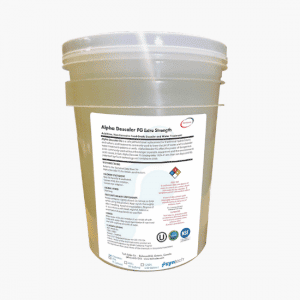Chemicals may cause harm in many different ways. They may be flammable, explosive, radioactive, corrosive, etc. All chemicals are toxic at some level. The dose, however, determines the hazard. Every chemical has some set of exposure conditions in which it is toxic and, conversely, every chemical has some set of exposure conditions in which it is not toxic. So when a company claims a chemical is non-toxic be wary of the conditions, especially when they claim it is non-toxic when used as directed
Toxicity is objectively evaluated on the basis of test dosages made on experimental animals under controlled conditions. The most common measure that toxicologists use to estimate the acute toxicity of chemicals on humans is LD50. LD50 is an abbreviation for “Lethal Dose 50%.” The LD50 value for a chemical is the amount of chemical that can be expected to cause death in half (50%) of a group of a particular animal species when the chemical enters the body by ingestion or skin absorption. The amount required to cause death is normally related to body weight: therefore, the LD50 is expressed in milligrams of chemicals per kilogram of body weight (mg/kg). A typical LD50 statement includes the substance, the route of entry, and the animal species; as shown below:
Aniline LD50 oral-rat: 250mg/kg.
In plain English, this LD50 statement says that a single oral dose consisting of 250 mg of aniline will kill, on average, one-half the population of 1-kg rats.
No LD50 data exists for humans. Data from test animals is used to estimate the possible acute toxicity of a chemical on a human being. Toxicity, data should therefore be used to evaluate the relative toxicity of various chemicals and which chemicals may require greater precautions when handled. The lower the LD50 value, the more toxic the substance.
In general, chemicals with LD50 values less than 300mg/kg are considered highly toxic, those with LD50 values between 300 and 1,000 mg/kg are considered moderately toxic, and those with LD50 values between 1,000 and 5,000 mg/kg are considered slightly toxic. Because LD50 values depend on body weight, however, many chemicals that may not harm an adult may be toxic to a small child. The LD50 value is an approximation, relative acute toxicity value based on statistical calculations. Some people may become severely ill or even die at much lower dosages than an LD50 may suggest. There are five (5) categories that have been established to indicated level of toxicity and category 5 would be indicative of substances which are of relatively low acute toxicity hazard but which, under certain circumstances may present a danger to vulnerable populations. These substances are anticipated to have an oral or dermal LD50 in the range of 2000-5000 mg/kg or equivalent doses for other routes.
Most Chemical descalers based on the use of Hydrochloric Acid has a concentration of around 10% by volume. Much less than that will make the scale removal very low – you end up purchasing just water. Any higher and that and it will have a greater negative effect on the skin. Corrosion inhibitors are added to Hcl products to inhibit their corrosive effect on metals and to some extent on the skin but it does not eliminate corrosion. Corrosive or negative effect on humans is not reduced by adding inhibitors and the last thing you would ever want is to get this material in your eyes. A 10% or slightly under 10% Hcl solution has an LD50 oral-rat: 900mg/kg.
It “should have” a health rating as follows:
- Health Rating: 3 – Severe (Poison)
- Flammability Rating: 0 – None
- Reactivity Rating: 2 – Moderate
- Contact Rating: 3 – Severe (Corrosive)
Toxological Information should be provided for any HCl based products of around 10% concentration as follows:
Hydrochloric acid: Inhalation rat LC50: 3124 ppm/1 hour; Oral rabbit LD50: 900 mg/kg. Investigated as a tumorigen, mutagen, reproductive effector.
This puts it in the moderately toxic range. So any claims to non-toxicity for any HCl products with even a less than 10% concentration of HCl should be suspect. Any HCl product when descaling will also produce fumes, hence an inhalation measure. All HCl based descalers always give a warning to use in a well ventilated area side-stepping the issue of inhalation.
When comparing to Alpha Descaler and Alpha Descaler FG which both have zero HCl but will dissolve as much calcium scale or more as a 10% concentration HCl, the rating is quite different:
Alpha Descaler, Alpha Descaler FG, Alpha Descaler Extra Strength and Alpha Descaler FG:Extra Strength are rated with an Acute Oral Toxicity: Category 5.
- Alpha Descaler: LD50: 7300 mg/kg oral.
- Alpha Descaler FG: 17300 mg/hg oral.
- Alpha Descaler Extra Strength: LD50: 3650 mg/kg oral.
- Alpha Descaler FG Extra Strength: 8650 mg/hg oral.
All products give negligible fuming action while working so inhalation is not a concern.
HCl based products have been around for a long time. But so has a great deal of other old, less effective and less safe technology that should be replaced.
THE QUESTION YOU NEED TO ASK YOUR DESCALER SUPPLIER:
Get their LD50 – at full strength, not diluted. (Alpha Descaler and Alpha Descaler FG, regular and extra strength figures are at full strength). If it’s anywhere close to 1000 you might want to have them justify any claims to non-toxicity and maybe find out what else may be misleading.




